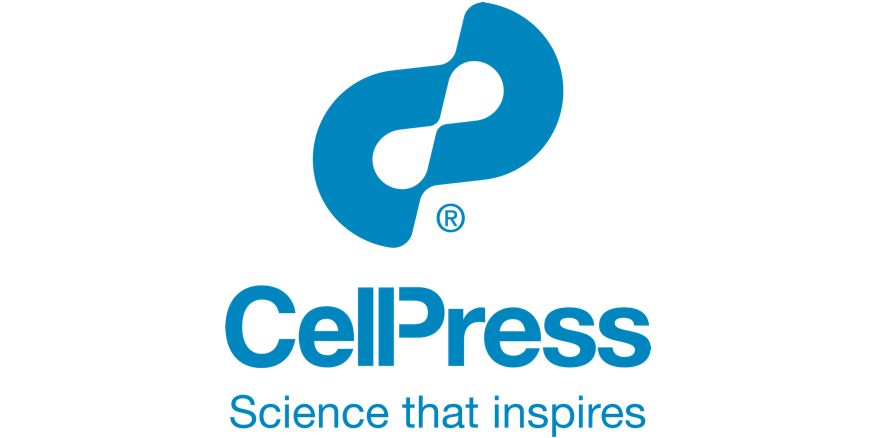
Online Now! Human PSC-derived organoids model sympathetic ganglion development and its functional crosstalk with the heart #stemcells
11.12.2025 17:00 — 👍 1 🔁 0 💬 0 📌 0@cp-cellstemcell.bsky.social
Cell Stem Cell publishes research and reviews at the forefront of stem cell biology, bioengineering, and regenerative medicine. Posts by Cell Stem Cell editors.

Online Now! Human PSC-derived organoids model sympathetic ganglion development and its functional crosstalk with the heart #stemcells
11.12.2025 17:00 — 👍 1 🔁 0 💬 0 📌 0
When the heart calls for help: Clusterin reprograms immunity to enable regeneration
08.12.2025 20:09 — 👍 1 🔁 0 💬 0 📌 0
Unlocking human brain networks by assembling circuits in vitro and in vivo
08.12.2025 15:10 — 👍 0 🔁 0 💬 0 📌 0
An exploratory proposal for a revision to the 14-day rule in the regulatory context of China
08.12.2025 12:45 — 👍 0 🔁 0 💬 0 📌 0
Optimizing translational efficiency in stem cell clinical research
06.12.2025 00:36 — 👍 1 🔁 0 💬 0 📌 0
The evolution of microglia replacement: A new paradigm for CNS disease therapy
05.12.2025 20:10 — 👍 4 🔁 0 💬 0 📌 0
👩🚀 What are the health effects of space on astronauts? Our Catriona Jamieson, MD, PhD, sheds light on the topic in a new @cp-cellstemcell.bsky.social article. Her work — the 1st comprehensive study of stem cell health in astronauts — provides answers NASA Twins couldn't: bit.ly/3KsuyLe
04.12.2025 21:42 — 👍 3 🔁 2 💬 0 📌 1
Space-associated stem cell hallmarks of aging and resilience in astronauts
05.12.2025 15:10 — 👍 0 🔁 0 💬 0 📌 0
Reversing lysosomal dysfunction restores youthful state in aged hematopoietic stem cells
05.12.2025 12:45 — 👍 0 🔁 0 💬 0 📌 0
Macro-scale, scaffold-assisted model of the human bone marrow endosteal niche using hiPSC-vascularized osteoblastic organoids
05.12.2025 03:07 — 👍 2 🔁 0 💬 0 📌 0
Injury-induced Clusterin+ cardiomyocytes suppress inflammation and promote regeneration in neonatal and adult hearts by reprogramming macrophages
05.12.2025 00:37 — 👍 1 🔁 0 💬 0 📌 0
Generation of human nucleus basalis organoids with functional nbM-cortical cholinergic projections in transplanted assembloids
04.12.2025 22:15 — 👍 0 🔁 0 💬 0 📌 0
Senolytic-sensitive p16Ink4a+ fibroblasts in the tumor stroma rewire lung cancer metabolism and plasticity
04.12.2025 20:09 — 👍 1 🔁 0 💬 0 📌 0
New issue alert! Featuring papers on cardio-immune interactions in heart regeneration, HSC aging and resilience in astronaut blood (cover), brain organoids with cholinergic circuitry, an organoid atlas & biobank, plus a macro-scale model of bone marrow endosteal niches. www.cell.com/cell-stem-ce...
04.12.2025 19:06 — 👍 4 🔁 1 💬 0 📌 0If you are interested in aging and stem cells, check out our newly published work in Cell Stem Cell, in collaboration with Mickaël Ménager and his team at Institut Imagine (Paris, France), on a lysosome-based strategy that reverses aging in blood-forming stem cells.
03.12.2025 20:03 — 👍 8 🔁 4 💬 1 📌 0
A phenotypic brain organoid atlas and biobank for neurodevelopmental disorders
04.12.2025 17:03 — 👍 0 🔁 0 💬 0 📌 0
Online Now! Space-associated stem cell hallmarks of aging and resilience in astronauts #stemcells
25.11.2025 00:36 — 👍 2 🔁 1 💬 0 📌 0
Online Now! Reversing lysosomal dysfunction restores youthful state in aged hematopoietic stem cells #stemcells
24.11.2025 20:09 — 👍 2 🔁 1 💬 0 📌 1
Online Now! Macro-scale, scaffold-assisted model of the human bone marrow endosteal niche using hiPSC-vascularized osteoblastic organoids #stemcells
18.11.2025 20:09 — 👍 2 🔁 0 💬 0 📌 0
Online Now! Injury-induced Clusterin+ cardiomyocytes suppress inflammation and promote regeneration in neonatal and adult hearts by reprogramming macrophages #stemcells
11.11.2025 00:36 — 👍 0 🔁 0 💬 0 📌 0
Boosting dopamine: Following the lineage toward Parkinson’s repair
10.11.2025 20:09 — 👍 0 🔁 0 💬 0 📌 0
RPE replacement therapy for dry AMD—early success in a phase 1/2 clinical trial
10.11.2025 15:11 — 👍 0 🔁 0 💬 0 📌 0
Tissue regeneration: Unraveling strategies for resolving pathological fibrosis
10.11.2025 12:45 — 👍 0 🔁 0 💬 0 📌 0
N6-methyladenosine on L1PA governs the trans-silencing of LTRs and restrains totipotency in naive human embryonic stem cells
08.11.2025 00:36 — 👍 0 🔁 0 💬 0 📌 0
Human heart-macrophage assembloids mimic immune-cardiac interactions and enable arrhythmia disease modeling
07.11.2025 20:09 — 👍 3 🔁 0 💬 1 📌 0
3D-generation of high-purity midbrain dopaminergic progenitors and lineage-guided refinement of grafts supports Parkinson’s disease cell therapy
07.11.2025 15:10 — 👍 1 🔁 0 💬 0 📌 0
EZHIP restricts noncanonical PRC2 binding and regulates H3K27me3 intergenerational inheritance and reprogramming
07.11.2025 12:46 — 👍 3 🔁 0 💬 0 📌 0